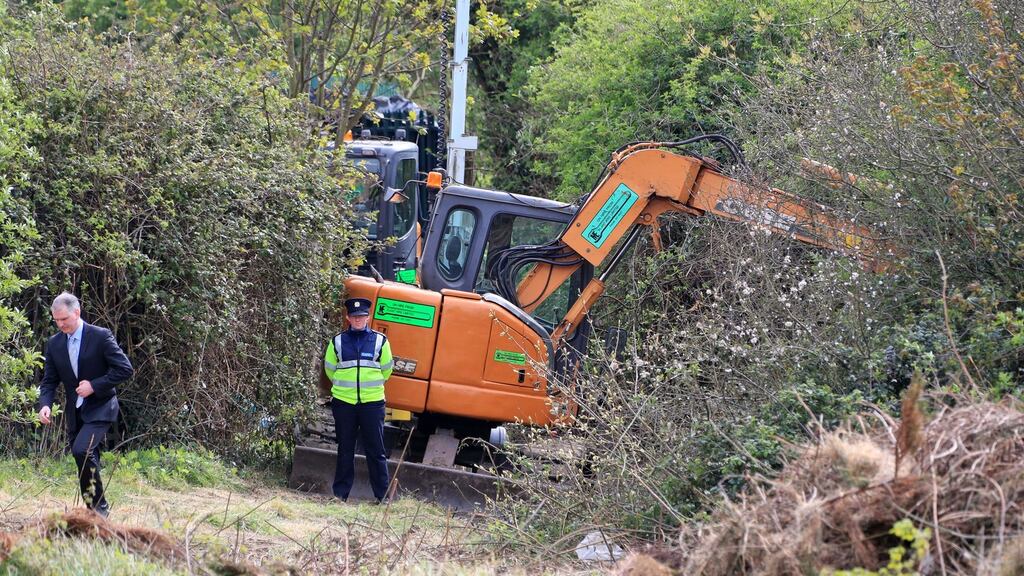The information that lead gardaí to a shallow grave containing a murder victim’s torso in a Dublin park came from a suicide note left by the dismembered man’s brother.
Gardaí found a torso on Monday that they believe is the partial remains of James Nolan, whose severed arm was found on Dollymount Beach, north Dublin, just over six years ago.
While the torso must be DNA tested to confirm identity, Garda sources said there was little doubt it was Nolan’s.

The 46-year-old, from Fairlawn Road in Finglas, Co Dublin, was last seen at the Wellmount Clinic in Finglas on November 30th, 2010, where he collected methadone.
A postmortem concluded his arm had been cut from his body after his death. The nature of the cutting marks ruled out the possibility the arm had come from a body hit by the propellers of a boat, as had been speculated at the time it was found.
A cross check of a police DNA database in the UK confirmed it was Nolan’s limb.
Last November, when his brother Thomas died by suicide in a flat in Carrickmacross, Co Monaghan, a note he left contained significant information.
Confession
The note, which was addressed to other members of the Nolan family, contained a confession by Thomas Nolan that he had strangled his brother in Glasnevin Cemetery before dismembering his body.
He claimed some of the body was buried in Tolka Park, Finglas, and other body parts had been dumped in Lough na Glack in Co Monaghan, close to the flat where he took his own life.
They also say the information set out in the suicide note was regarded as genuine from the outset and had now effectively been confirmed.
It was unclear how the arm had been found washed up on Dollymount in February, 2011. Sources said it was possible the limb entered the sea having been washed down the Tolka river in flood waters before finally being washed up on shore.
Detectives would not comment publicly on the source of the information that led them to the site.
Specialist Garda search teams including cadaver dogs, which are trained to locate human remains, had been searching the Finglas site since April 1st.
Supt William Carolan of Blanchardstown Garda station said the torso, which was “mainly intact” but dismembered and decapitated, was discovered about 30cm below the surface at 1pm on Monday.
The dig was stopped immediately and gardaí requested the services of State pathologist Professor Marie Cassidy who carried out an investigation. The torso was then taken to the State mortuary in Whitehall for a postmortem.
Scrub
The dig at the site, which is large and masked by dense scrub and undergrowth, will continue until the entire area has been fully investigated.
“We have about 50 per cent of the site fully searched,” said Supt Carolan. The search is expected to last 10 more days.
Nolan’s family was informed of Monday’s development and a Garda family liaison officer has remained in contact.
Detectives at Clontarf Garda station investigating the severed arm found on Dollymount Beach have also been notified.
Nolan took part in the abduction and gang rape of a 22-year-old woman in north Dublin in 1984.
He was convicted and sentenced to 14 years in prison in 1986. He was released in 1996 after serving most of his sentence at Arbour Hill Prison.
At the time of his disappearance, he had recently been released from Portlaoise Prison, having served a sentence for burglary.
Nolan’s inquest heard his arm was found by a man walking his dog. Prof Cassidy told Dublin Coroner’s Court it had been “cleanly” severed post- death using a very sharp knife.
“A propeller can leave quite a clean mark on a body but they are usually longer,” she said.
“These were very carefully and deliberately going around the whole circumference of the limb. It was deliberately cut.”
The arm had been dismembered at the shoulder and wrist. Two large sections of skin had been removed from the upper arm and forearm.
Prof Cassidy said these appeared to be tattoos removed to prevent identification of the limb.












